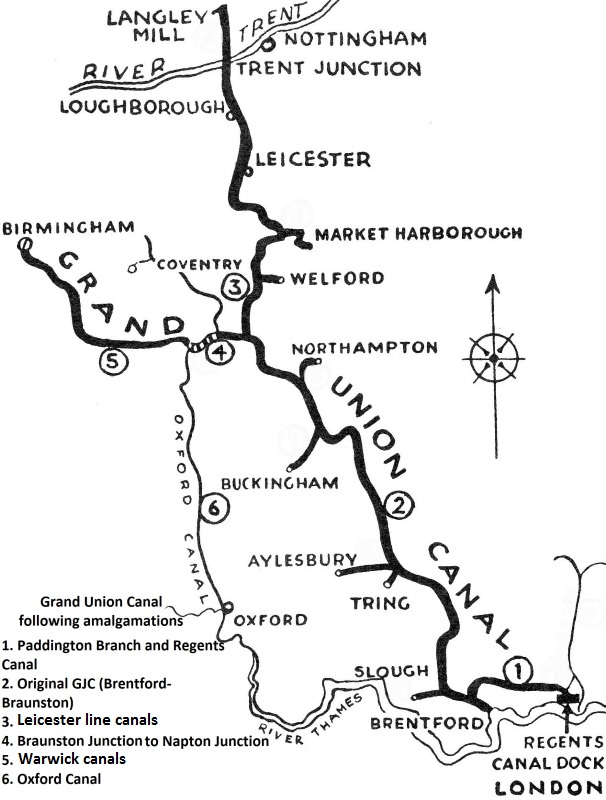|
The Bridgewater Canal was Britain’s first true canal.
Opened in 1761, it demonstrated the feasibility of using a
man-made waterway to move heavy loads comparatively quickly over
distance. A transport revolution then followed during
which the many canals built to exploit this new
load moving ability were
to become both cause and effect of the rapid industrialisation of the Midlands
and the north of England. Improved transport communications made centralised
industrial manufacture viable and was thus an important factor
in bringing about the transition from cottage industry to the factory system.
Completion of the Oxford Canal in 1790 provided a link between
our growing
canal network and London. However, the route was
unsatisfactory; not only was it over-long, but the section that
relied on the River Thames below Oxford was difficult to navigate. The need for
a more direct and reliable waterway to link the Capital with the Midlands
and the north of England led to the construction of the Grand
Junction Canal.
At its northern end, the Canal forms a
junction with the Oxford Canal at Braunston in Northamptonshire
(just to the right of point ‘4’ on the sketch map).
The waterway then follows a south-easterly course via Wolverton,
Leighton, Tring and Uxbridge to reach the River Thames at
Brentford, with an important branch from Hayes to Paddington —
this was later extended by the Regent’s Canal to make a further
connection to the Thames at Limehouse (point ‘1’ on the sketch
map.

A sketch map of the Grand
Union Canal in 1938, the Grand Junction
Canal having by then been
absorbed into this larger network (the branch to Buckingham had
been abandoned).
Construction commenced in 1793. By 1800, the Canal was substantially complete, a short gap
remaining between Stoke Bruerne and Blisworth where civil
engineering problems with the long Blisworth Tunnel delayed final completion until 1805.
For some years thereafter the Canal
was
very profitable, but from the 1840s onwards it fell into commercial
decline as the mainline railways
― principally the London & Birmingham Railway ― gradually captured its
long distance trade. Throughout the canal industry this second transport
revolution forced companies to reduce
their tariffs to
barely economic levels to retain what business they could in the face
of this new and voracious competition ― many went to the wall.
In 1894, the Grand Junction Canal Company bought two of the
Leicestershire canals, their owners being on the verge of insolvency, thereby extending its domain to Leicester.
Then, in 1929, the Company amalgamated with the Regent’s and Warwick canals to
form the Grand Union Canal Company and bring under single ownership the waterway from Brentford and Limehouse on the Thames,
to Birmingham. Further canal purchases in 1932 extended
the network from Leicester to the River Trent and onwards to the
Nottinghamshire/Derbyshire border. But despite a
greater mileage of canals being brought under unified control and heavy
investment in
improvements, rail and increasingly road continued to dominate
the transport industry. A growing shortage of boatmen prepared to accept the
rigors of canal life added to the Company’s difficulties.
By the mid-1950s only the section of the Canal below Uxbridge remained
commercially viable. A decade later, trade had diminished to negligible
proportions, but by then canal carrying was being superseded by leisure cruising, a fact recognised in the 1968 Transport Act, which gave British
Waterways a remit to
develop our canals for leisure use. Today the Grand Union Canal (as it now is) carries more
leisure traffic during the summer season than its predecessor did commercial traffic during its heyday as a major
arterial highway.
The following account deals with these events in more detail ― we hope you find
it interesting.
FOREWORD . . . .
――――♦――――
|